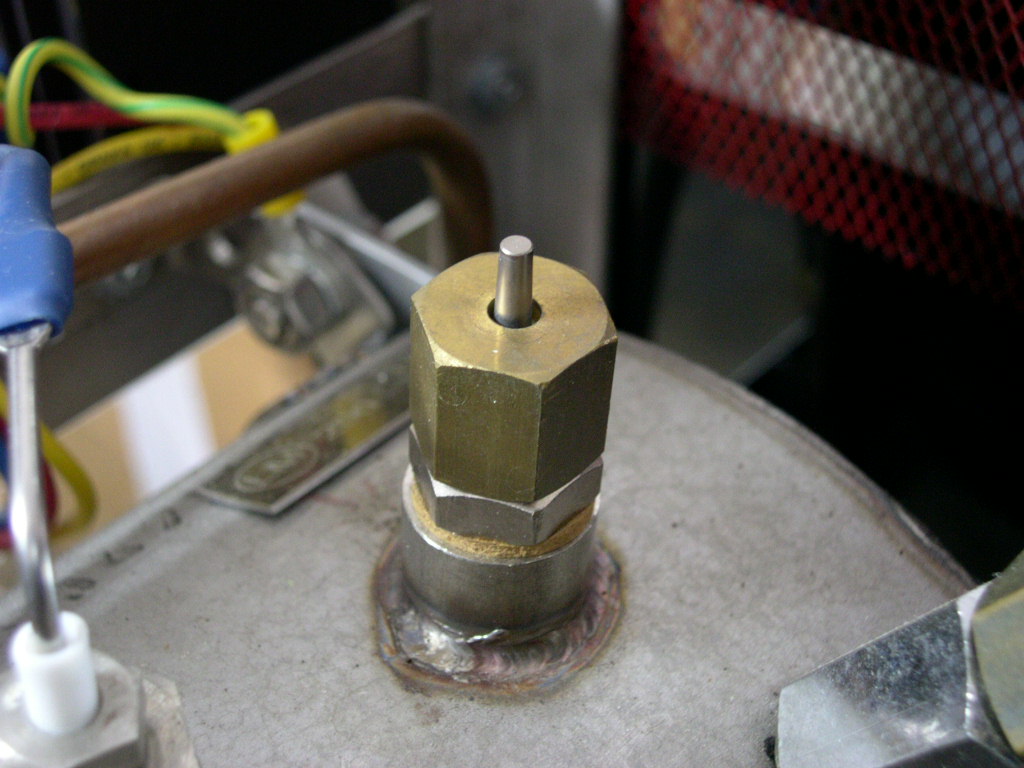The Vacuum Breaker
/By Hylan Joseph
Part: Vacuum Breaker
Description: Steam Operated, one-way valve
Discussion: A vacuum breaker is a small steam operated valve on the top of the steam boiler that is open to the atmosphere until enough steam pressure is present to close it. Very old espresso machines did not have a vacuum breaker and two bad things would happen as a result of this:
When the unit was first heated up, the air in the steam boiler would heat up before the water would. The heated hair would expand, and the resulting air pressure would look to the pressurestat (see section on pressurestat) just like steam pressure. As a result, the heating element would be shut down without steam having been generated and the steam pressure gauge would read full pressure. The barista could not tell the difference and would attempt to steam milk but, instead of steam, would get only a short blast of hot air followed by a quick loss of pressure. With the hot air expelled from the tank, the unit would then proceed to generate steam normally. In practice, this was avoided by the barista opening the steam valve when first turning on the machine, and closing it as soon as a significant quantity of steam started to come out of the steam valve. Then, having heated and purged the steam boiler of its air, the system would work normally.
On shutting down the system for the night, the steam in the boiler would cool, and the steam and air inside the steam boiler would condense and contract. As it did, a vacuum would be created that would suck any milk remaining in the steam valve assembly into the steam boiler. There are bacteria in milk that thrive on hot wet conditions and that are not bothered by the temperatures found in espresso machines. The result is a steam boiler that smells like rotten milk and may turn any one of a number of unpleasant colors. In practice the barista would have to remember to open the steam valve on the espresso machine at closing every night until the unit cooled. Forgetting even once could result in an unpleasant situation and an expensive repair.
The vacuum breaker is now standard on most machines. It consists of a small fitting, usually on the top of the steam boiler, sometimes on a tube coming from the top of the steam boiler. It has a small plunger that is held open by gravity until enough steam pressure is present to force the plunger up, stopping the opening, Once stopped, steam pressure holds it closed.
When heating, this allows hot expanding air to escape until it is replaced by true steam pressure. Thus the barista does not have to remember to manually open, and then close, the steam valve. On cool down, as soon as the steam pressure drops below the air pressure in the room (atmospheric pressure) the vacuum breaker opens, preventing a vacuum from forming inside the tank, and thus preventing a vacuum from ever forming that might suck milk product into the steam tank.
Failure Mode: The vacuum breaker can fail to close properly. This results in a continual steam leak as long as the steam boiler has pressure. Conversely, the vacuum breaker can fail to open. This can result in the same conditions present in old machines without vacuum breaker. On startup hot hair will mimic steam, giving only a short blast of hot air after which the unit will heat normally. On cool down a vacuum can form that may suck milk into the steam boiler.
Photo via Espresso Restoration.


